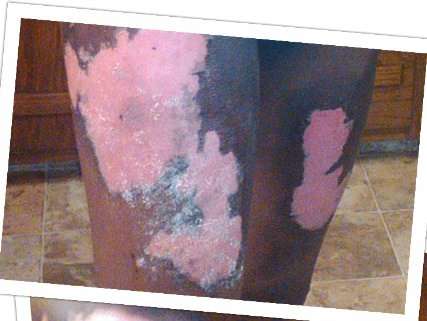Drug Warriors Say They Use Mutilating Grenades for Safety
ProPublica exposes cops' promiscuous use of flash-bangs.

A devastating new ProPublica story presents disturbing evidence that the promiscuous use of SWAT teams by police across the country is accompanied by the promiscuous use of flash-bang grenades, explosive devices that are designed to distract and disorient targets by creating a deafening noise and blinding light. When recklessly deployed, flash-bangs also can cause serious injury or death. ProPublica reporters Julia Angwin and Abbie Nehring found that "at least 50 Americans, including police officers, have been seriously injured, maimed or killed by flashbangs since 2000." That number "is likely a fraction of the total," they add, "since there are few records kept on flashbang deployment."
The story opens and closes with the case of Treneshia Dukes, a Georgia woman who suffered second-degree burns during a 2010 raid in which Clayton County police deployed three flash-bangs and turned up "about a tenth of an ounce of marijuana." An internal investigation concluded that the cops had done "nothing wrong." Dukes is trying to prove otherwise through a federal lawsuit that charges police with using excessive force.
Angwin and Nehring also discuss the fruitless 2014 drug raid in Habersham County, Georgia, that left 19-month-old Bou Bou Phonesavanh horribly injured by a flash-bang tossed into his crib in the middle of the night. Bou Bou's family is stuck with medical bills that total $1.6 million so far, and the little boy has undergone a series of surgeries that will continue into adulthood. "Because his skin grafts won't grow as he grows," Angwin and Nehring write, "Bou Bou will need reconstructive surgery every two years for the next 20 years." A local grand jury concluded that the officers who carried out the raid that burned and mutilated Bou Bou had conducted a sloppy investigation but had not been criminally careless. The Justice Department is investigating, and the Phonesavanhs are expected to file a civil suit.
Angwin and Nehring suggest that flash-bangs are overused, often without adequate training. They cite data collected by the American Civil Liberties Union showing that "between 2011 and 2013, Little Rock police tossed flashbangs into homes on 112 occasions, or 84 percent of raids—nearly all of them in predominantly black neighborhoods." A police department spokesman defended that record, telling ProPublica, "You may see a large number of flashbang deployments, but what we see is a large service of warrants without gunfire." But Angwin and Nehring point out that "no weapons were found at three-quarters of the homes during this period."
One of those Little Rock raids involved a grandmother accused of illegally selling beer and food from her home—a misdemeanor that triggered the use of a battering ram and a flash-bang, which started a fire in a pile of clothing. "If she hadn't been selling illegal items out of the home, no warrant would have been served," the police spokesman told ProPublica. "What you call extreme, we call safe."
To my mind, tossing explosive devices into the homes of nonviolent offenders is decidedly unsafe; in fact, it is inherently reckless, especially since there is always the possibility that innocent bystanders like Treneshia Dukes or Bou Bou Phonesavan will be injured or killed. Even if the police had found the drugs they were expecting in those cases, that would hardly justify their paramilitary assaults. Flash-bangs, like SWAT tactics generally, should be reserved for life-threatening situations involving hostages, barricaded shooters, and the like. They should not be casually tossed into the mix of techniques for busting unauthorized sellers of bud or beer.


Show Comments (32)